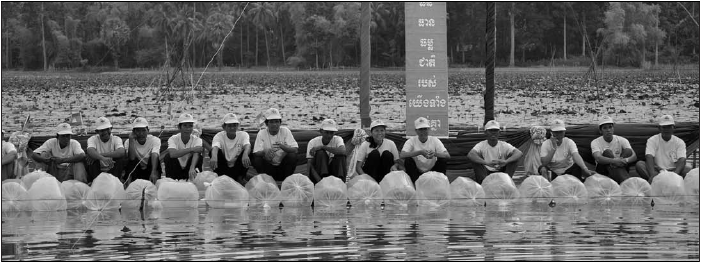Minister urges irrigation and hydro developers to address fish migration
Effective measures to protect deep pools and other refuges also needed
Cambodia's Agriculture, Forestry and Fisheries Minister Chan Sarun has reiterated the need for developers to assess the negative impacts of irrigation and hydropower projects on fish migration. Speaking at a National Fish Day ceremony at Lake Khnar in Kampong Chhnang province in July, Chan Sarun said the 2006 Law on Fisheries was an effective tool for managing, protecting, conserving and developing fish resources for future generations. "The development of irrigation and hydropower dams and canals without impact assessments must be avoided, as such development will negatively affect fish migrations," he said. "Effective measures must be developed in order to protect refuges and deep pools in lakes and rivers for brood fish to hide, feed and spawn".
'Dams Dams and canals without impact assessments ... will negatively affect fish migrations'
The minister noted that with rapid population growth of 1.8% per year, Cambodia's demand for fish and forest products was expected to increase dramatically by 2010. "Therefore, much attention has to be paid to developing and conserving these limited resources for the country and people". Chan Sarun described the Tonle Sap Lake and the Mekong River as being among the country's five important areas for development and conservation, along with the Cardamom Mountains, the Northern and the Eastern Highlands. He said that Cambodia ranked fourth in the world in terms of inland fish production after China, India and Bangladesh. He also noted that Cambodian fisheries employed 1.4 million people on a full-time basis and another 6 million people on a part-time basis in occupations such as processing, sales, fishing gear production and boat building. At the same time, fish provides more than 75% of the animal protein in the average local diet, giving Cambodians one of the highest rates of fish consumption in the world. "Fish and other aquatic animals are very important for all Cambodians, being the second staple food after rice," he said. The minister's comments followed recent work by the Cambodian Fisheries Administration and the MRC to develop a new flood index to measure the health of Tonle Sap fishery resources. Research has indicated that long-term or permanent declines in the extent or duration of the flood could threaten the livelihoods of people dependent on fishery resources (see Catch and Culture, Vol 14, No 1)

Preparing to release fish at Lake Khnar
in Kampong Chnnang Province on July 1
Choose a newsletter: